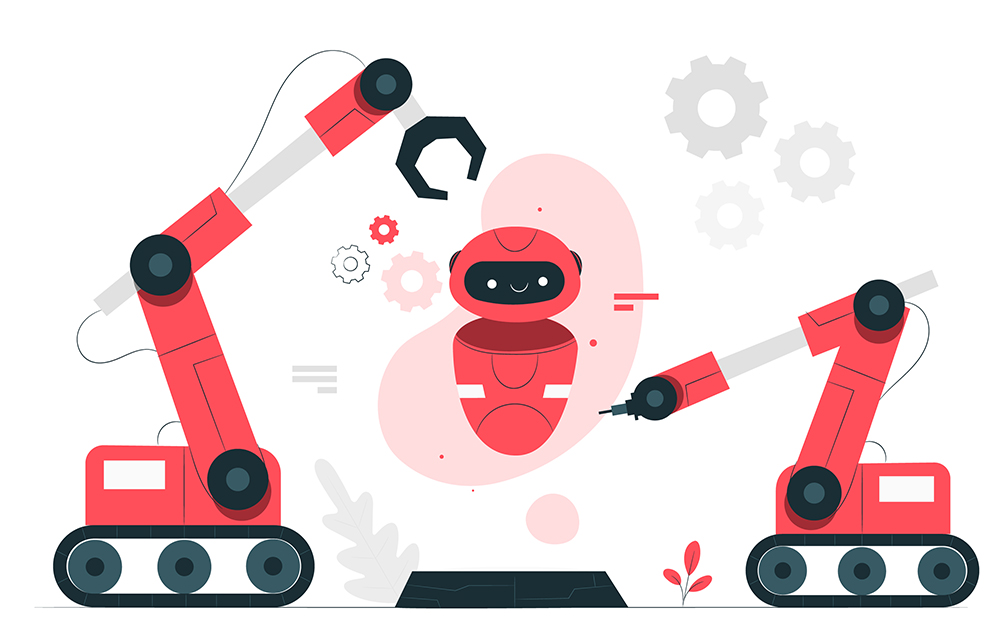Introduction
Understanding the importance of employee retention is key to building a stable and thriving workforce. Retaining skilled employees ensures continuity, fosters a positive work environment, and strengthens company culture. When employees feel valued and see a clear path for growth within the organization, they are more likely to stay committed and contribute to long-term success.
However, enhancing employee retention is not a one-size-fits-all solution. It requires a strategic approach tailored to the unique needs and dynamics of your organization. This blog explores effective strategies for improving employee retention, offering practical insights into creating an environment where employees are motivated, engaged, and eager to stay.
Understand the Key Factors Influencing Employee Retention
Understanding the key factors that influence employee retention is essential for developing effective strategies to keep your top talent. Employees decide to stay or leave based on a combination of factors that impact their overall job satisfaction and sense of belonging within the organization. Let’s delve into the main factors that influence employee retention:
Job Satisfaction
Role Clarity and Expectations:
- Clear Job Descriptions: Ensure that employees have a well-defined understanding of their roles and responsibilities. Ambiguity can lead to frustration and disengagement.
- Realistic Expectations: Set achievable goals and expectations. Overburdening employees with unrealistic targets can lead to burnout and dissatisfaction.
- Regular Updates: Periodically review and adjust job roles as needed to keep them aligned with organizational goals and employee skills.
- Transparent communication: Clear communication about any decisions by the management such as policy changes builds trust, reduces uncertainty, fosters engagement, ensures fairness, supports a positive organizational culture, prevents misinformation, and encourages long-term employee commitment, all of which are key to improving employee retention.
Work Environment:
- Supportive Atmosphere: Create a positive work environment where employees feel supported and valued. This includes fostering respectful and inclusive interactions among team members.
- Physical Workspace: Ensure that the physical workspace is comfortable and conducive to productivity. A well-maintained and organized environment can enhance job satisfaction.
Career Development Opportunities
Training and Skill Development:
- Professional Growth: Offer regular training and development programs to help employees enhance their skills and advance their careers. This could include workshops, seminars, and online courses.
- Cross-Training: Provide opportunities for employees to learn about different roles within the organization. This can increase their engagement and versatility.
Career Progression Paths:
- Clear Advancement Opportunities: Define and communicate clear career paths within the organization. Employees are more likely to stay if they see a future for themselves with your company.
- Mentorship and Coaching: Implement mentorship programs where experienced employees can guide and support newer or less experienced team members in their career growth.
Compensation and Benefits
Competitive Salaries:
- Market Benchmarking: Regularly review and adjust salaries to remain competitive within the industry. Conduct salary surveys to ensure your compensation packages are in line with market rates.
- Performance-Based Increases: Offer merit-based raises and bonuses to reward exceptional performance and contributions.
Comprehensive Benefits Packages:
- Health and Wellness: Provide comprehensive health insurance, including medical, dental, and vision coverage. Additionally, consider offering wellness programs, such as gym memberships or mental health support.
- Retirement Plans: Offer competitive retirement plans, such as 401(k) with employer matching, to help employees plan for their future.
- Additional Perks: Include other benefits such as paid time off, flexible working hours, and remote work options to enhance overall job satisfaction.
Work-Life Balance
Flexible Working Arrangements:
- Remote Work Options: Allow employees to work from home or choose flexible working hours if possible. This flexibility can greatly enhance work-life balance and job satisfaction.
- Family-Friendly Policies: Implement policies that support family needs, such as parental leave, childcare support, and flexible scheduling for caregivers.
Stress Management:
- Supportive Resources: Provide resources and programs that help employees manage stress and avoid burnout, such as employee assistance programs (EAPs) and wellness initiatives.
- Encourage Time Off: Promote the importance of taking breaks and utilizing vacation time to ensure employees recharge and maintain a healthy work-life balance.
Implement Family-Friendly Policies:
- Parental Leave: Offer generous parental leave policies to support employees during significant life events. Ensure that leave policies are inclusive and supportive of all family situations.
- Childcare Support: Consider providing childcare assistance or subsidies to help employees manage their family responsibilities.
Promote Health and Wellness:
- Wellness Programs: Implement wellness programs that support physical and mental health. This could include gym memberships, mindfulness sessions, or health screenings.

Foster a Positive Work Environment
Creating and maintaining a positive work environment is crucial for enhancing employee satisfaction and retention. A supportive and engaging work atmosphere not only boosts morale but also fosters loyalty and productivity. Here’s a closer look at how to cultivate a positive work environment:
Promote a Strong Company Culture
Define and Communicate Core Values:
- Establish Clear Values: Clearly define your company’s core values and mission. These should reflect the principles that guide your organization’s operations and interactions.
- Embed Values in Daily Operations: Integrate these values into everyday practices and decision-making processes. Ensure that they are visible and consistently reinforced through leadership actions and company policies.
Align Culture with Employee Expectations:
- Understand Employee Needs: Regularly solicit feedback from employees about what they value in the workplace. Use surveys, focus groups, or one-on-one meetings to gather insights.
- Foster Inclusivity: Create an inclusive environment where diverse perspectives are welcomed and valued. Implement policies and practices that promote diversity and equality.
Recognize and Appreciate Contributions:
- Implement Recognition Programs: Develop formal recognition programs to celebrate achievements and milestones. This could include employee of the month awards, recognition events, or shout-outs in company communications.
- Personal Acknowledgment: Encourage managers to personally acknowledge and thank employees for their hard work and contributions. A simple thank-you can go a long way in making employees feel valued.
Encourage Open Communication
Establish Clear Communication Channels:
- Multiple Platforms: Provide various platforms for communication, including team meetings, email, instant messaging, and feedback tools. Ensure that employees feel comfortable using these channels to voice their opinions and concerns.
- Regular Updates: Keep employees informed about company news, changes, and decisions. Transparency helps build trust and prevents misinformation.
Promote Active Listening:
- Encourage Feedback: Create opportunities for employees to provide feedback on company policies, procedures, and workplace issues. This can be done through surveys, suggestion boxes, or regular check-ins.
- Address Concerns Promptly: Actively listen to employee concerns and take timely action to address them. Show that their input is valued and that changes are made based on their feedback.
Support Collaborative Teamwork:
- Team Building Activities: Organize team-building activities and events to strengthen relationships among employees. This can include workshops, social events, or collaborative projects.
- Encourage Cross-Department Collaboration: Promote collaboration between different departments and teams. This can enhance communication, foster innovation, and improve overall team dynamics.
Improve Compensation and Benefits
A strong compensation and benefits package is essential for retaining top talent. Here’s how to enhance your offerings:
Conduct Regular Salary Reviews
- Benchmark Salaries: Regularly compare your salaries with industry standards using market research and salary surveys. Adjust as needed to stay competitive.
- Performance-Based Increases: Link salary increases to performance metrics. Recognize and reward high performers with merit-based raises or bonuses.
- Transparency: Clearly communicate how compensation decisions are made and keep employees updated on any changes.
Enhance Benefits Packages
- Health Coverage: Provide comprehensive medical, dental, and vision insurance. Include Health Savings Accounts (HSAs) or Flexible Spending Accounts (FSAs) for additional flexibility.
- Retirement Plans: Offer retirement plans such as 401(k) with employer matching. Provide resources for retirement planning.
- Non-Monetary Benefits: Include wellness programs, such as gym memberships or mental health support, and additional perks like paid time off and childcare assistance.
Tailor Benefits to Employee Preferences
- Flexible Options: Allow employees to customize their benefits packages to suit their personal needs. Use surveys to understand what benefits are most valued.
- Non-Monetary Rewards: Complement monetary compensation with non-monetary rewards, such as extra time off or professional development opportunities.
Improve Compensation and Benefits
A strong compensation and benefits package is essential for retaining top talent. Here’s how to enhance your offerings:
Conduct Regular Salary Reviews
- Benchmark Salaries: Regularly compare your salaries with industry standards using market research and salary surveys. Adjust as needed to stay competitive.
- Performance-Based Increases: Link salary increases to performance metrics. Recognize and reward high performers with merit-based raises or bonuses.
- Transparency: Clearly communicate how compensation decisions are made and keep employees updated on any changes.
Enhance Benefits Packages
- Health Coverage: Provide comprehensive medical, dental, and vision insurance. Include Health Savings Accounts (HSAs) or Flexible Spending Accounts (FSAs) for additional flexibility.
- Retirement Plans: Offer retirement plans such as 401(k) with employer matching. Provide resources for retirement planning.
- Non-Monetary Benefits: Include wellness programs, such as gym memberships or mental health support, and additional perks like paid time off and childcare assistance.
Tailor Benefits to Employee Preferences
- Flexible Options: Allow employees to customize their benefits packages to suit their personal needs. Use surveys to understand what benefits are most valued.
- Non-Monetary Rewards: Complement monetary compensation with non-monetary rewards, such as extra time off or professional development opportunities.
Also Read: Employee Well-being and its Impact on Productivity
Conclusion
Improving employee retention is crucial for a thriving, stable workforce. By focusing on job satisfaction, career development, and competitive compensation, you create a supportive environment that encourages employees to stay and excel.
Implementing strategies such as fostering a positive work culture, offering robust benefits, and supporting work-life balance will enhance employee satisfaction and loyalty. Regularly review and refine these strategies to ensure long-term success and engagement.
For more insights or assistance in creating a thriving workplace, reach out to us. Your commitment to enhancing employee retention will lead to a more motivated and successful team.





